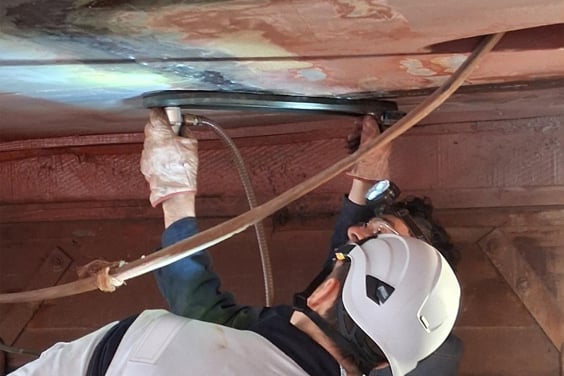The risk-based inspection scheme, outlined in the new Guidance Notes, is an alternative to the traditional periodical classification survey scheme. It is applied by following a risk based inspection plan approved by Lloyd’s Register, with the purpose of detecting and monitoring system, sub-system, equipment and component degradation and applying appropriate decision making criteria to manage risk to acceptable levels.
Lloyd’s Register’s Rules and Regulations for the Classification of Offshore Units, Part 1, Chapter 6, allows for a Risk Based Inspection (RBI) scheme to be applied to floating offshore installations at a fixed location.
You can also find out about our services relating to Risk Based Inspection for Hull Structures or read our Quick Guide to the Risk Based Inspection of Hull Structures.
Frequently Asked Questions
Q: What do we mean by Risk Based Inspections (RBI)?
A: Risk Based Inspection methodologies are predominant in the oil and gas industry. Rather than following a prescriptive “one size fits all” survey regime a prioritised inspection plan is developed where Items with high probability and high consequence (i.e. high risk) are given a higher priority for inspection than items that are high probability but for which failure has low consequences.
Q: What is Risk Based Inspection for Hull Structures?
A: Instead of following a periodical hull survey regime an operator can choose to implement an alternative RBI scheme. Provided the associated RBI plan is approved by Lloyd’s Register then this methodology can be used for assignment of LR Class.
Q: Can I apply an Risk Based Inspection methodology to the remainder of the unit?
A: LR provides an Risk Based Inspection service for process facilities with our RBI for Static Equipment service.
Q: What documentation applies to Risk Based Inspection for Hull Structures?
A: Part 1 Chapter 6 of the Rules for Offshore Units contains the Rule requirements that an operator needs to satisfy in order to be able to apply an RBI for Hull Structures methodology. They are essentially an enabler. LR’s Guidance Notes for RBI of Hull Structures contain information on how an operator could run such a scheme. The four key stages within the Guidance Note reflect the services that LR offers.
Q: To what units is Risk Based Inspection for Hull Structures applicable?
A: The scheme is applicable to those units that are assigned the Lloyd’s Register OI notation applicable to floating offshore installations at a fixed location. Other mobile vessels are subject to external standards which prescribe a periodical survey regime.
Q: What are the benefits of Risk Based Inspection for Hull Structures?
A: A well-structured Risk Based Inspection management plan can minimise downtime and help mitigate risk and shut-downs due to regulatory non-compliance.
Q: Is Risk Based Inspection for Hull Structures a cheaper option for an operator?
A: The cost of Classification with LR will be about the same, however in order to fully realise the benefits of the scheme an operator will need to front-load investments, especially in the initial planning stage.











